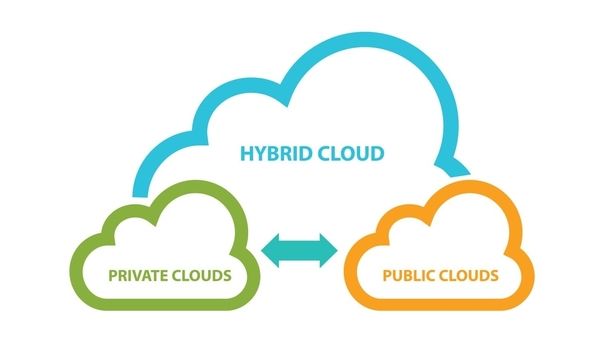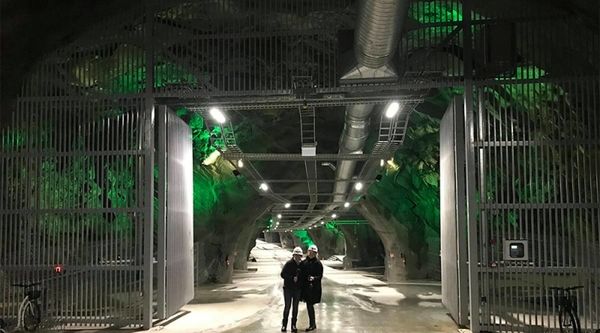
How Hybrid Data Centers Can Help to Optimize DCIM
June 4, 2019
Why Subterranean Data Centers Are Gaining Popularity?
June 6, 2019What will the data center of the future look like? For most enterprises, it almost certainly won’t be a large facility filled with racks and cabinets of equipment supporting diverse workloads. The data center of the future will be smaller, application-focused, and located according to business need rather than IT operational requirements.
This future is not far away. Gartner has predicted that, by 2025, 80 percent of enterprises will have shut down their legacy data centers. In just six short years, the data center as we know it will have evolved out of existence. Some might argue that is revolutionary, not evolutionary.
The Internet of Things (IoT) is also playing a role. As organizations adopt more and more IoT devices, they need to move to compute, storage and networking closer to those devices to minimize latency. The same holds for artificial intelligence (AI), data analytics, and other advanced applications.
But those are technological reasons. From a business perspective, the traditional data center is economically inefficient — most data centers overprovision capacity to support growth and as a hedge against downtime. A 2017 IDC study found that the typical data center uses just 45 percent of provisioned size, and resources sit idle 55 percent of the time. Data centers are also operationally inefficient due to the repetitive manual tasks that consume 45 percent of the IT team’s time.
More significantly, the traditional data center is inflexible. It only does not have the agility needed to meet changing business demands.
In light of these factors, most organizations are already well underway with their hybrid cloud initiatives and are moving more and more workloads to the edge. This is driving a new IT strategy that is service-driven rather than architecture-driven. In this approach, services are located based upon business needs and workload requirements rather than in a centralized data center.
The Service-Driven Approach

At first blush, it might seem more efficient to install all IT equipment in one facility where a centralized team can oversee it. The concept harks back to the “glass house” data centers that housed mainframes. In that era, the IT department tightly controlled the environment and built applications that would run on the existing infrastructure.
Today, many IT initiatives are driven by the business, and business users don’t understand the effort required to build out IT infrastructure on a box-by-box basis. What’s more, IT leaders aren’t always in a position to dictate how IT services will be implemented. It’s simple enough for business users to adopt cloud services on their own, creating a new set of problems for IT to contend with.
The only logical response is for IT to adopt a service-driven approach that focuses on business value. IT leaders must build application portfolios that best meet the needs of the business and are flexible enough to adapt as those needs change. Many applications will be hosted in the cloud — by 2020, $216 billion of IT spending will be redirected from on-premises infrastructure to the cloud, according to Gartner. However, the decision to move a particular application should be based not on the technical advantages of the cloud, but what works best for the business.
Other factors are also driving workload placement decisions. One of the most basic is the rise of the geographically dispersed enterprise with users around the globe. Workloads must be shifted closer to users to ensure a high-quality experience. Similarly, organizations are concerned about the customer experience as more and more applications and services are outward facing. And the need to comply with a growing array of industry and government regulations, particularly privacy laws such as the European Union’s General Data Protection Regulation, is forcing organizations to rethink workload placement.
Managing the ‘Everywhere Data Center’

With a service-driven approach to IT, the data center is, in effect, everywhere — the cloud, the edge, branch locations, and regional facilities. It’s in IoT devices on far-flung corporate assets. It may also include a centralized facility if that’s the most economically efficient location for specific workloads.
Organizations will build out portions of this environment, and partner with cloud providers and colocation facilities for the rest. The critical change that will occur is in how this infrastructure is envisioned and supported. Today, many data centers are managed in silos by administrators with specific expertise in servers, virtualization, storage, networking, etc. When workloads are location-agnostic, this approach no longer makes sense. Further, an emphasis on managing infrastructure is not conducive to a service-driven strategy.
IT leaders can no longer hire based upon vertical expertise — they will need to develop teams with diverse skill sets and adaptability. Vendor management skills will be critical, as will an understanding of automation and orchestration, integration, and customization. The IT team will also need to become proficient in a new breed of monitoring and management tools that work across a wide range of assets regardless of physical location.
These tools should provide metrics that help IT optimize the delivery of services. In turn, IT operational processes should be focused on cost management, automation, and the user and customer experience. These processes must also be flexible enough to accommodate new and potentially disruptive technologies.
The data center of the future will scarcely resemble the extensive, centralized facilities that are commonplace today. For many organizations, that type of data center will cease to exist, replaced by an array of smaller, distributed sites that are designed to support specific workloads. Applications will be placed in the cloud, at the edge or in regional data centers to meet business requirements, regulatory compliance obligations, and customer demands.
IT will still be responsible for these workloads and will need new skills, tools, and processes to optimize service delivery while keeping a lid on costs. In the end, however, this service-driven IT strategy will create a more agile, responsive, and efficient “data center” that’s better suited to today’s business environment.

